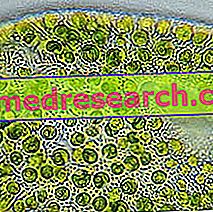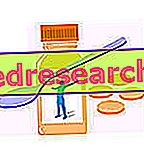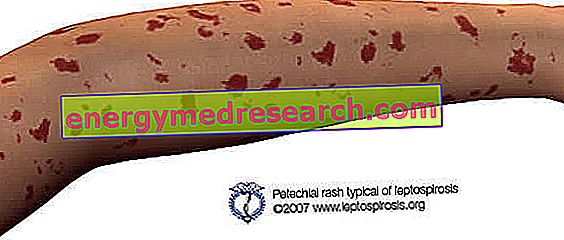Hepatitis C
Hepatitis C is an infectious disease caused by the HCV virus, which mainly affects the liver.
In the initial period of infection, the symptoms are absent or barely perceptible; rarely appear fever, dark urine, abdominal pain and jaundice.

Over the years, chronic hepatitis C can induce liver disease - such as cirrhosis, fibrosis, functional failure and cancer - and / or esophageal and gastric varices.
Diagnosis takes place with blood tests.
Hepatitis C spreads mainly through blood-to-blood contact (intravenous drug use, medical equipment, childbirth, wounds and transfusions), NOT by casual contact (hugs, kisses, sharing of tableware, food and water) .
There is no vaccine for hepatitis C and chronic infection can be treated with drug therapy; those who developed cancer or liver cirrhosis may require a transplant (not always resolutive).
Around the world, around 130-200 million people are infected with hepatitis C (especially in Africa and Asia).
Diet and motor activity
Since there is no form of foodborne infection, the hepatitis C diet does not play an important role in disease prevention.
On the other hand, we have already shown that, in the long term, hepatitis C is able to cause cirrhosis, fibrosis and finally cancer; obviously, these conditions are associated first with a reduction in function and then with overt hepatic failure.
The diet for liver failure is not the same as that intended to treat a suffering liver. Below we will talk about how to deal with an intermediate situation, which does NOT provide for the diagnosis of liver failure proper.
Obviously, a liver incapable of complying with its numerous tasks (oncotic pressure, transport protein synthesis, digestive bile production, glycemic homeostasis, pharmacological metabolism, etc.) significantly affects the general state of health.
When the chronicity of hepatitis C impairs liver function, it becomes necessary to reduce the overall metabolic effort.
Among the various processes that are influenced by diet and lifestyle we recognize: proteosynthesis, proteolysis, transamination, glycogenosynthesis, glycogenolysis, lipogenesis, lipolysis, pharmacological and hormonal metabolism, bile production, etc. To do this, first you need:
- Structure a balanced, normocaloric and well-distributed diet between meals
- Avoid sedentariness, as well as intense motor activity
- Avoid unnecessary medications and supplements.
Hepatic failure and diet
When the reduction in functional liver capacity is very high (as occurs, for example, in decompensated cirrhosis), nutritional needs become totally different and variable based on the type of manifest complications (portal hypertension, encephalopathy, ascites, renal impairment, defects of coagulation etc).
First of all, the subject must be put to absolute rest, possibly lying down, to favor venous return. Often, at this point, the patient needs parenteral nutrition.
In the case of encephalopathy, it is absolutely necessary to reduce the total protein intake by up to 50%, estimating it to be approximately 0.5 g of peptides per kilogram of body weight.
Keep in mind that liver failure also causes a decrease in the protein synthesis of blood factors (coagulation proteins, transport proteins, etc.). For this reason, in the absence of encephalopathy, the protein quantity in the diet (necessary for the synthesis of the aforementioned proteins) MUST NOT be absolutely reduced (1.2 and up to 1.5g / kg); the risk would be to aggravate this functional incapacity.
Furthermore, recent studies suggest that it is advisable to replace aromatic amino acids with branched amino acids, which do NOT have an equally negative impact on azotemia.
At the onset of ascites, on the other hand, it is recommended to carry out a severe sodium restriction (contained in cooking salt and, to a lesser extent, in natural foods), bearing in mind that excluding it altogether could worsen the functionality of the already compromised kidneys .
Nutritional Principles
The essential nutritional principles for maintaining satisfactory liver function in the presence of chronic hepatitis C can be summarized as follows:
- Abolish ethyl alcohol and all nerves. Alcohol acts negatively on liver cells and worsens the metabolism of vitamin B1 (which the liver is not able to store anyway); the nervini, instead, are totally useless molecules that the liver, before letting them be expelled with urine from the kidneys, must metabolize.
- Abolish junk or unhealthy foods and drinks. This group includes all fast-food (chips, croquettes, pancakes, hamburgers, etc.), industrial sweet and savory snacks and sweet drinks (carbonated or not).
Junk foods have a nutritional profile characterized by the richness of harmful molecules; some of these are: saturated or hydrogenated fats (also in trans conformation), refined sugars (sucrose, maltose, added granular fructose), food additives (dyes, flavor enhancers, preservatives, sweeteners, etc.) and toxins released in cooking techniques high intensity (by irradiation or metallic conduction) such as: acrylamide, formaldehyde, acrolein, polycyclic aromatic hydrocarbons, etc.
- Favor the consumption of fresh (possibly frozen) or raw foods, limiting those processed and / or refined. Various processes, such as the pearling process of the seeds or the bleaching of the flours - but also the mixing of meat / fish with other ingredients to create sausages or croquettes or other doughs (such as surimi) - exploit mechanisms of chemists and physicists that deprive the food of many useful nutrients. Suffice it to say that, in refined flours, the overall nutritional reduction of fiber, salts, vitamins and essential fats is close to 80%. In particular, in the diet for hepatitis C the coenzyme vitamin factors, necessary to support many cellular processes of the specific tissue, must not be lacking; although the liver is notoriously a very effective vitamin reserve, due to the infection it could lose (at least in part) this capacity.
- Structure a normocaloric regime. This means that the energy intake must be sufficient to maintain the weight, without it increasing or decreasing, circumstances in which the organ must perform a greater amount of work.
- For the same reason, it is important that the energy is divided into at least 5 meals, 3 of which are main and 2 secondary. A solution that includes: 15% of calories at breakfast, 7-8% in mid-morning and mid-afternoon snacks, 35-40% at lunch and dinner may be recommended.
- Maintain nutritional balance. This could be summarized as follows: lipids 25-30% of calories, proteins about 0.8-1.5g / kg and all the rest in carbohydrates (of which, not more than 10-16% simple). The contributions of: fiber, mineral salts, vitamins and cholesterol must also fall within the limits of specific requirements. Furthermore, non-vitamin or saline antioxidants, such as phenolic antioxidants (contained above all in fruit and vegetables) must not be missing. To get a more precise idea of how a similar nutritional regime could be organized, it is advisable to read the article: Healthy Eating.
- If the subject is gluten intolerant, the hepatitis C diet should exclude: wheat, spelled, spelled, rye, barley, oats and sorghum. In fact, decompensated celiac disease is responsible for an increase in systemic inflammation and abnormal immune activation. To replace the cereals mentioned above, you can choose: millet, rice, corn and teff, or pseudocereals such as quinoa and amaranth, or even all legumes (beans, lentils, peas, beans, lupins, chickpeas, etc.). NB . It is better to avoid grass peas, especially in large quantities, due to their content of oxalylenedminopropionic acid (toxic).
- It is absolutely forbidden to drink non-drinking water and to take food or drink that is potentially contaminated by it. In the case of hepatitis C, the liver is not able to optimally metabolize any chemical or other toxic residues.
- Plenty of fresh fruit and vegetables. The foods belonging to the VI and VII fundamental group of foods are the main sources of vitamin C, carotenoids (provitamin A), vitamin K and various types of antioxidants (such as phenolic ones). In all, it would be advisable to provide 4-5 portions of fresh fruit and vegetables of 150-300g each, best if mostly raw.
- Promote the intake of therapeutic nutrients for the liver. In addition to the various antioxidant factors (some of which also have anti-inflammatory, anticancer power, etc.) it is very useful to increase the phytoelements that play a hepatic-protective role; for example, the cynarin and the silymarin of the artichoke and the milk thistle.
- Emphasize the contribution of polyunsaturated fatty acids to the detriment of saturated ones, both in proportion and in quantitative terms. It is particularly advisable to increase the dietary content of omega 3 essential fatty acids and not too much omega 6.
The omega 3 (ALA, EPA and DHA - see article: Omega 3 and Omega 6 fatty acids) are anti-inflammatory precursors and can help the body reduce general inflammation; arachidonic acid (a derivative of omega 6) has the opposite effect. The most suitable foods are: blue fish (mackerel, mackerel, bonito, anchovies, sardines, etc.), some oil seeds (almonds, sesame, etc.) and some cold-pressed vegetable oils (extra virgin olive oil, flax seed oil, walnut oil) etc).



